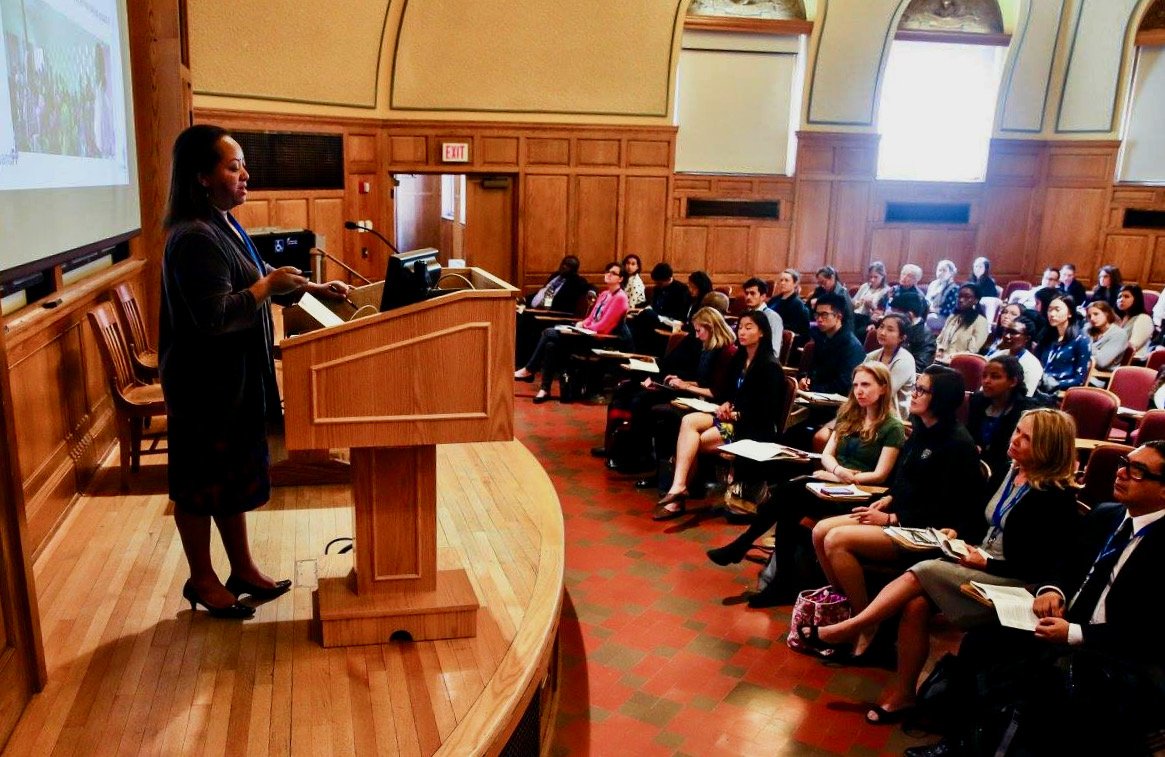
HEALTH EDUCATION STRATEGIES CERTIFICATE
Module 2: Health Illiteracy and Poor Health Outcomes
A lack of local representation in the design of programs results in the creation of ineffective and mistargeted health campaigns. Programs developed without an understanding of local cultural beliefs, practices, and existing medical knowledge in a community are likely to be ineffective. A student working on a visual communication campaign to spread awareness of cervical cancer among a Latina population in California explains, for example, that “prior to hearing their answers in their voice, we were running on facts, figures, and assumptions… having a direct connection to our audience was monumental in shaping the way we looked at what problems to solve and how to solve them."(1) Poor health literacy correlates with low levels of poverty, general illiteracy, and low levels of education, but it is exacerbated by a lack of representation in healthcare organizations, health campaigns, and in the development of disease interventions. As the World Health Organization explains, healthcare programs should adopt participatory approaches in their work, as this will “encourage discussion and debate and will result in increased knowledge and awareness, and a higher level of critical thinking…(which) enables communities to understand the interplay of forces operating on their lives, and helps them take their own decisions."(2) It is important to adopt these types of approaches when developing visual communication aids. Poorly designed visual communication tools result in patient misunderstanding about health information, which can ultimately result in a mistrust of medical professionals, a failure to seek help, and inadequate adherence to treatment.
General Literacy Levels
Literacy has been consistently observed as critical to participation in healthcare programs and to improved quality of life. According to the United States National Adult Literacy Campaign, literacy is defined as "an individual's ability to read, write, speak, compute and solve problems at levels of proficiency necessary to function on the job and in society, to achieve one's goals, and to develop one's knowledge and potential.”(3) The United Nations Educational, Scientific and Cultural Organization (UNESCO) Institute for Statistics (UIS) has collected literacy data based on a much less complex definition. The organizations found that 13 of the 182 countries in the study showed an adult literacy rate below 50%. All 13 of these countries are from sub-Saharan Africa, with Mali coming in last with a 26.2% adult literacy rate.(4)
Profile of Health Literacy and Health-Seeking Behavior
While literacy is essential to community development, health literacy is fundamental to the effectiveness of health programs. Health literacy is defined as “the ability to understand and use healthcare information to make decisions and adhere to instructions for treatment”. Economic affluence and higher education oftentimes do not guarantee accurate understanding about the nature and causation of illnesses, nor do they directly correlate with an increased likeliness that one will take personal responsibility for one’s healthcare. A study conducted in the United States found that health information is generally written at a much higher level than the average American can comprehend.(5) Other studies have shown that most healthcare materials are written at a tenth-grade reading level, while the average American has a reading level of only eighth grade. Increasing communities’ health literacy through the design and use of community-created visual communication materials has a strong correlation with the success of health programs. Therefore, public health programs should strive to incorporate effective visual communication tools in order to communicate with low-literacy populations that cannot be reached through traditional means such as written pamphlets or books. By improving visual literacy tools, we can improve overall health literacy and encourage those with medical needs to seek care, which improves communities’ overall participation in healthcare programs.
Footnotes
(1) Designmatters. “Es Tiempo: Raising Awareness of Cervical Cancer Prevention amongst Latinas.” 2010. Art College Center of Design.
(2) World Health Organization. “Community Empowerment.” https://www.who.int/hiv/pub/sti/swit_chpt1.pdf?ua=1.
(3) Berkman ND, DeWalt DA, Pignone MP, Sheridan SL, Lohr KN, Lux L, Sutton SF, Swinson T, Bonito AJ. Literacy and Health Outcomes. Summary, Evidence Report/Technology Assessment No. 87 (Prepared by RTI International–University of North Carolina Evidence-based Practice Center under Contract No. 290-02-0016). AHRQ Publication No. 04-E007-1. Rockville, MD: Agency for Healthcare Research and Quality. January 2004.
(4) Human Development Report 2009 (p. 171, 204). http://hdr.undp.org/sites/default/files/reports/269/hdr_2009_en_complete.pdf.
(5) Nienkamp, Meredith. “Visual Literacy Tools Overcome Health Illiteracy”.
